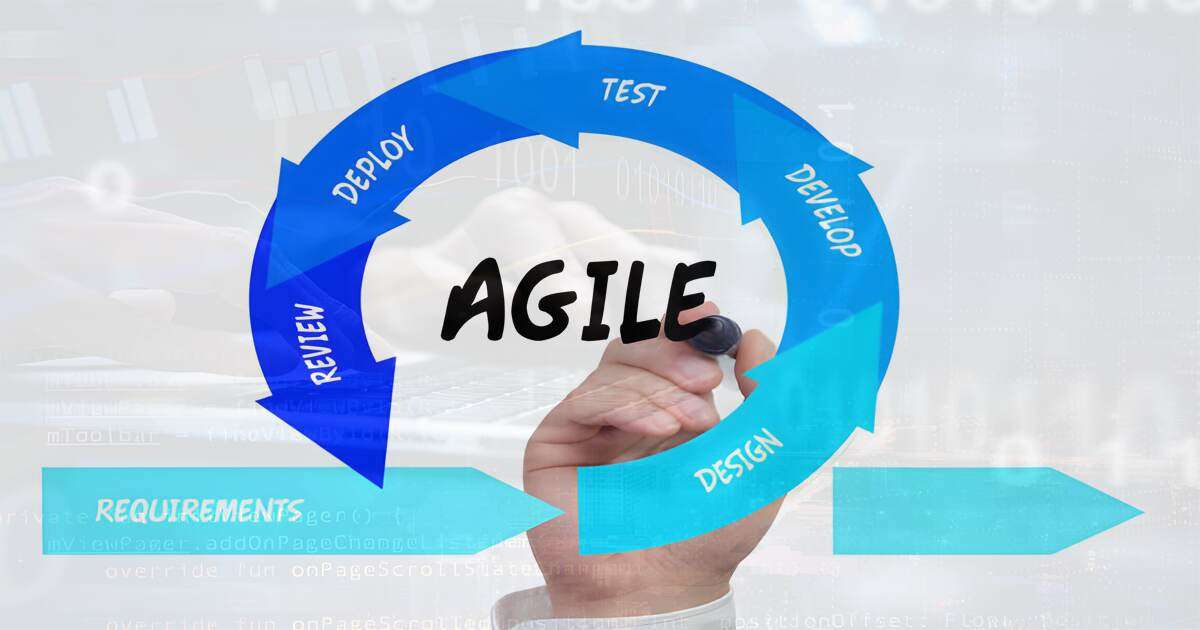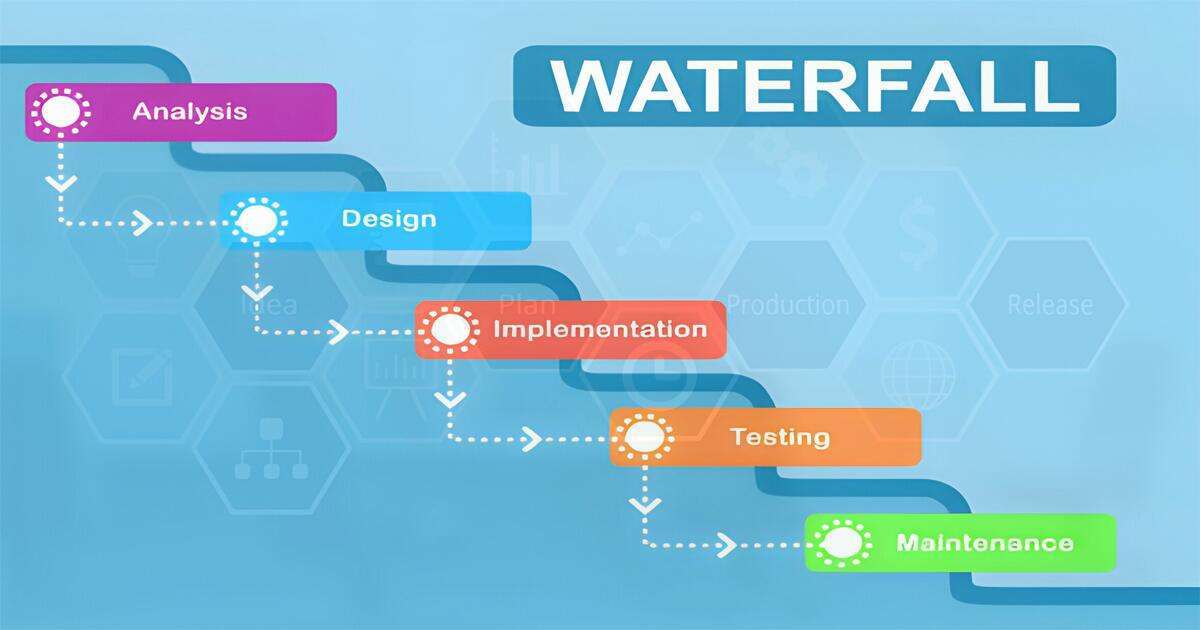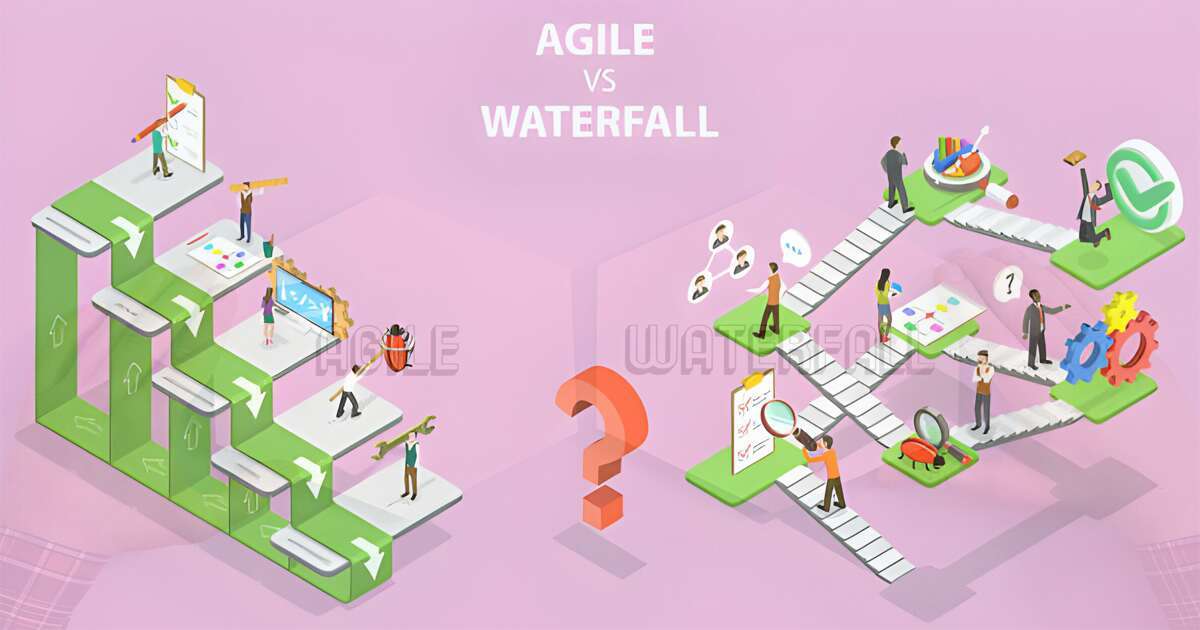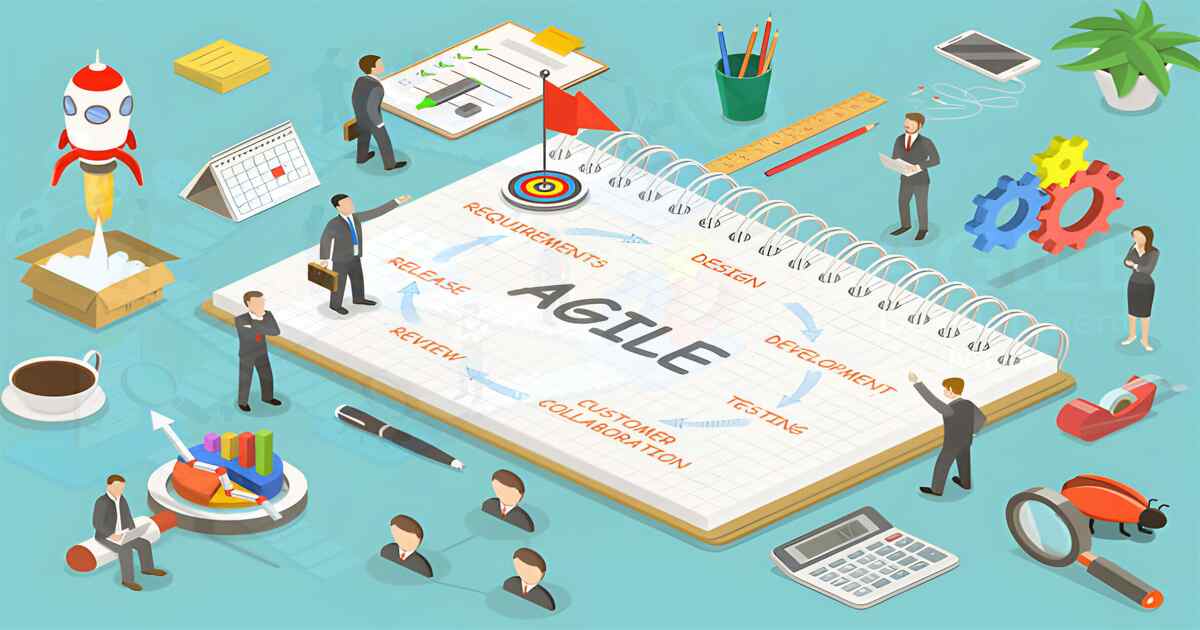Agile software development represents a dynamic and iterative approach to designing, building, and delivering software solutions. This methodology focuses on flexibility, collaboration, and customer satisfaction, emphasizing adaptive responses to change throughout development.
At its core, agile breaks down the traditional software development cycle into smaller, manageable iterations known as sprints. Typically lasting two to four weeks, these sprints allow development teams to respond to evolving requirements and swiftly integrate stakeholders’ feedback. Collaboration is a cornerstone of agile, with cross-functional teams working closely to ensure efficient communication and problem-solving.
One of the key principles of agile is customer involvement. Regular reviews and feedback sessions keep clients engaged and ensure that the end product meets their expectations. This customer-centric approach enhances the quality of the final deliverable and fosters a sense of ownership and satisfaction among stakeholders.
Moreover, agile promotes continuous improvement through retrospectives at the end of each sprint, enabling teams to reflect on their processes and identify areas for enhancement. This iterative feedback loop contributes to a culture of learning and adaptability, fostering a more resilient and responsive development environment.
In conclusion, agile software development is not just a methodology; it’s a mindset that prioritizes collaboration, flexibility, and customer satisfaction. By embracing these principles, development teams can navigate the complexities of the ever-evolving software landscape with resilience and efficiency.
Agile Manifesto
The Agile Manifesto is a guiding beacon in software development, shaping the industry’s landscape with its revolutionary principles. Crafted by a group of forward-thinking software developers in 2001, this manifesto champions values and principles prioritizing individuals and interactions, working solutions, and customer collaboration over rigid processes and extensive documentation.
At its core, the Agile Manifesto emphasizes the importance of individuals and interactions within a development team. It values effective communication, teamwork, and adaptability, fostering a culture that empowers developers to collaborate seamlessly.
The manifesto places a premium on working solutions as the primary measure of progress. This departure from traditional methodologies underscores the significance of delivering tangible, functional results at every stage of development, promoting a dynamic and iterative approach.
Customer collaboration is another cornerstone of the Agile Manifesto, advocating for a partnership between developers and clients throughout development. By engaging customers in continuous feedback loops, the manifesto ensures that the end product aligns with their evolving needs and expectations.
In conclusion, the Agile Manifesto remains a transformative force in software development, championing values prioritizing people, collaboration, and adaptive processes. By adhering to these principles, development teams can navigate the complexities of the modern software landscape with agility and resilience.
Waterfall Development Method
The Waterfall Development Method, a traditional project management approach, represents a linear and sequential methodology for software development. In this model, the entire project is divided into distinct phases, with each phase building upon the deliverables of the previous one. This rigid structure unfolds like a waterfall, flowing through conception, initiation, analysis, design, construction, testing, deployment, and maintenance.
One of the defining features of the Waterfall method is its comprehensive documentation at each stage. Requirements are carefully documented upfront, leaving little room for changes once the project is underway. This meticulous planning ensures a clear and well-defined path throughout development.
However, the Waterfall model has faced criticism for its lack of flexibility. The sequential nature of the process makes it challenging to accommodate changes or address issues that may arise during development, potentially leading to delays and increased costs.
Despite its limitations, the Waterfall method has found its niche in projects with well-defined and stable requirements, where a systematic and predictable approach is preferred. It remains a valuable methodology in certain contexts, providing a structured framework for projects adhering to a predetermined course of action.
In conclusion, while the Waterfall Development Method may need more agility than modern approaches, its structured and linear nature makes it a viable option for projects with stable requirements and a preference for meticulous planning and documentation.
Agile Methodology Programming
The Agile methodology in programming has become a cornerstone in modern software development, fostering a dynamic and adaptive approach to project management. This methodology is rooted in the Agile Manifesto’s principles and prioritizes flexibility, collaboration, and customer satisfaction. Unlike traditional linear models, Agile divides the development process into sprint cycles, typically lasting two to four weeks. This iterative nature allows teams to respond promptly to changing requirements and integrate continuous feedback.
Central to Agile is the principle of cross-functional collaboration. Development teams comprising individuals with diverse skill sets work closely together, breaking down silos and promoting effective communication. This collaborative environment enhances problem-solving and ensures the entire team takes ownership of the project’s success.
Customer involvement is a key tenet of Agile programming. Regular feedback loops and demonstrations enable clients to participate actively in the development process, ensuring that the end product aligns with their evolving needs. This customer-centric focus not only enhances the quality of the software but also cultivates a sense of partnership between developers and clients.
In conclusion, Agile methodology in programming transcends a mere project management approach; it embodies a cultural shift towards collaboration, adaptability, and customer-centricity. By embracing these principles, development teams can navigate the complexities of programming with agility and deliver software solutions that truly meet the needs of their clients.
Agile Development Waterfall
The Agile development and the Waterfall model represent two distinct paradigms in software development, each with its own principles and approaches. Agile, a dynamic and iterative methodology, emphasizes flexibility, collaboration, and customer satisfaction. It breaks down the development process into incremental sprints, allowing teams to respond swiftly to changes and integrate continuous feedback. This approach thrives in environments where requirements are subject to evolution, promoting adaptive responses and fostering a customer-centric mindset.
On the other hand, the Waterfall model follows a linear and sequential path, with each phase building upon the deliverables of the preceding one. This method relies heavily on comprehensive upfront planning and documentation, making it suitable for projects with well-defined and stable requirements. However, the rigid nature of Waterfall can pose challenges when faced with changes or uncertainties during development.
The choice between Agile and Waterfall often hinges on project characteristics and stakeholder preferences. Agile suits dynamic projects where flexibility and continuous adaptation are paramount, while Waterfall excels in situations where a structured, predetermined plan aligns with project requirements. Some hybrid approaches, borrowing elements from both methodologies, have also emerged to balance flexibility and meticulous planning.
The Agile development and Waterfall models present distinct strategies catering to different project needs and complexities. The key lies in selecting the most fitting approach based on project requirements, scope, and the dynamic nature of the software development landscape.
Agile Model In Software Engineering
The Agile software engineering model has revolutionized how projects are approached, emphasizing adaptability, collaboration, and customer satisfaction. Rooted in the Agile Manifesto, this methodology advocates for iterative and incremental development cycles, allowing teams to respond swiftly to changing requirements. Unlike traditional linear models, Agile promotes flexibility by breaking the project into smaller, manageable sprint units, typically lasting two to four weeks.
A key principle of the Agile model is customer involvement throughout the development process. Regular feedback loops and continuous communication ensure that the end product aligns with the evolving needs and expectations of the stakeholders. This customer-centric approach enhances the software’s quality and fosters a partnership between the development team and the end users.
Collaboration is another cornerstone of the Agile model. Cross-functional teams with diverse skill sets work closely together, breaking down silos and promoting effective communication. This collaborative environment enhances problem-solving capabilities and ensures every team member contributes to the project’s success.
In essence, the Agile model in software engineering is more than a methodology; it’s a cultural shift towards embracing change, fostering collaboration, and delivering value to the customer at every step. By adhering to these principles, development teams can navigate the complexities of software engineering with agility and responsiveness.
Agile Methodology In Software Testing
The Agile methodology in software testing has emerged as a game-changer, transforming the testing process into a dynamic and integral part of the overall development lifecycle. Rooted in the principles of the Agile Manifesto, this approach emphasizes collaboration, adaptability, and continuous improvement, redefining how software testing contributes to delivering high-quality products.
In the Agile testing paradigm, testing activities are seamlessly integrated into each iteration or sprint of development. This ensures that testing isn’t a standalone phase but an ongoing process that runs parallel to coding. Testers collaborate closely with developers, product owners, and other stakeholders throughout the project, fostering effective communication and a shared understanding of quality objectives.
One of the key principles is the focus on delivering a potentially shippable product at the end of each iteration. This demands a comprehensive suite of automated tests, enabling rapid and reliable validation of new features. Continuous feedback loops and regular retrospectives contribute to a culture of continuous improvement, allowing teams to adapt testing strategies based on evolving project requirements.
Customer satisfaction is paramount in Agile testing, strongly emphasizing validating that the software meets end-user expectations. Agile testing methodologies ensure testing efforts align with customer needs, providing real-time feedback on the software’s functionality, performance, and usability.
In conclusion, Agile methodology in software testing transcends traditional testing practices, integrating quality assurance into the development fabric. This approach promotes collaboration, adaptability, and a relentless focus on customer satisfaction, ensuring that software testing becomes a proactive and value-driven aspect of Agile development.







